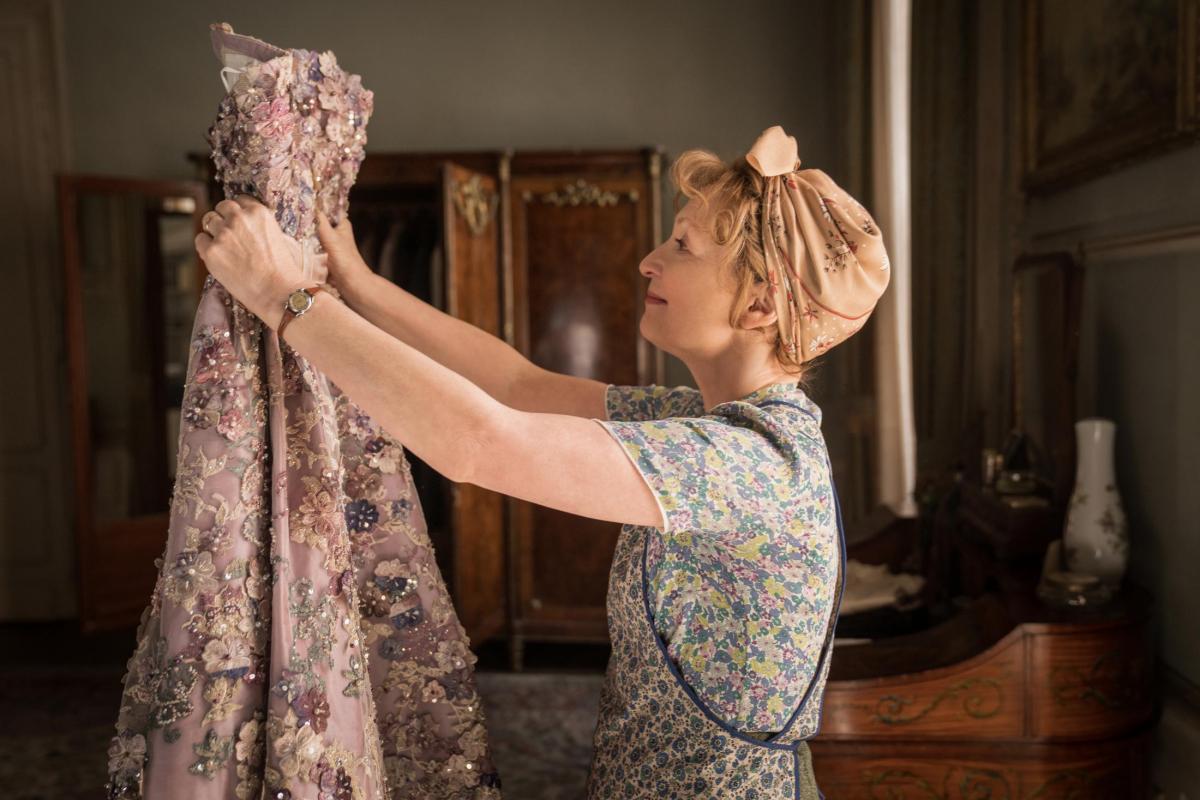
The mid-’60s British Invasion of the Beatles gets all the attention, but there was a second British Invasion, of sorts, that took place in the ’80s and early ’90s. That was a period of time when middlebrow British films were catnip for the U.S. art house crowd. Of course, Merchant Ivory were the undisputed kings of this invasion, but there were countless other, less literary films like Educating Rita, Shirley Valentine, and The Full Monty. Among other things, these films, which often focused on a scrappy, working-class underdog (or group of underdogs) overcoming odds to triumph, introduced us Yanks to a very specific sort of British whimsy. The films might have been unbearable were they not leavened with goodly amounts of wit and humanism. And they were distinct from their U.S. counterparts because the Brits have always allowed, well, human-looking humans to populate their films. (You almost never see someone with a paunch or bad teeth or saggy underarms headlining an American film).
Such films kind of drifted out of fashion—although they still pop up from time to time (in a way, the Paddington films fall under that category)—but it you want to see what your mom (or grandmom) was obsessing over in the late 20th century, go see Mrs. Harris Goes to Paris, the most perfect specimen of cinematic British whimsy I’ve seen in well over two decades.
Mrs. Harris Goes to Paris stars the wonderful Lesley Manville, who is neither paunchy nor saggy-armed. But she is in her mid-60s, which already makes her a fairly unlikely subject of a fairy tale. (The Emily who finds herself in Paris on Netflix, for example, is in her twenties.)
Cinephiles will be particularly amused by the choice of Manville as the lead because of her co-starring role in the brilliant The Phantom Thread, another film that dealt with the rarefied and exacting world of fashion houses. Of course, tone wise, the two films couldn’t be more different—no one will ever accuse Paul Thomas Anderson of being whimsical—but it’s an irresistible overlap.
I must say that at first I thought the twinkliness of Mrs. Harris Goes to Paris was going to break me. When we meet Mrs. Harris, she’s so plucky and optimistic and good-natured—and the film’s music so bubbly and winsome and twee—I feared I might overdose on the cuteness of it all. But thanks to excellent performances, extraordinary production design, and an increasingly engaging story, I mostly succumbed to the film’s (admittedly aggressive) charms.
Mrs. Harris is a house cleaner who lives in post-War London. She’s known for being unfailingly honest, kind, and optimistic.
“It’s my lucky day today!” she chimes to her best friend, fellow house cleaner Vi (EllenThomas).
“Same as every day,” Vi responds fondly.
One day, while cleaning a fancy house with a spoiled mistress, Mrs. Harris spots a gorgeous couture dress. It’s lilac colored, with a smart belt, butterfly appliques, and sparkling sequins. She’s mesmerized.
(Here, I must say, was one of my quibbles with the film. It might’ve been nice if we had previously seen Mrs. Harris flipping through the pages of a fashion magazine or being particular about her own small-budget wardrobe. Instead, it’s like she had a spontaneous fashion awakening upon seeing this dress. In fairness, it is Christian Dior.)
Suddenly she becomes obsessed with getting to Paris and buying a haute couture Dior dress of her own. There are setbacks en route to this quest, but mild ones. Reminder: The film is relentlessly good natured. Mrs. Harris loses at the dog track? A secret bet has been made on her behalf by her rascally friend Archie (Jason Isaacs). Mrs. Harris is forced to spend the night at the train station? The men who sleep there are kind and protective. The snooty atelier director (Isabel Huppert, having a blast) won’t let her in to the fashion show? A handsome widower marquis (Lambert Wilson) swoops in and saves the day.
And, oh, what a fashion show it is! The film seems to have meticulously recreated the mid-century designs of the famous couture house and they are stunning—chic, sculptural, elegant—more than deserving of the kind of worship that Mrs. Harris bestows on them. At one point, when she sees a particular dress, she gasps. At another point, she goes into a fugue state of sorts, similar to the way she felt when she first spotted her mistress’ dress.
In Paris, she has a magical time, hanging out with the marquis and serving as matchmaker between a young, disaffected model (Alba Baptista) and the handsome Dior finance guy (Emily in Paris’ Lucas Bravo, who seems to have the “hot guy in Paris” role on lockdown) who loves her. She also become the unofficial mascot of the House of Dior, beloved by models and seamstresses alike.
I know, I know. If you’re allergic to this sort of thing it all sounds insufferable. But the film is very good at what it does—gorgeous to look at and put together with manifest affection and care by director Anthony Fabian and crew. It also does have some things to say—mainly about the elevating power of beauty and the maddening way society tends to find aging women “invisible.” Of course, Mrs. Harris refuses to be invisible—and we robustly cheer on her efforts to be seen. The film was a welcome throwback. Now, time to dig out my old VHS copy of Enchanted April.
